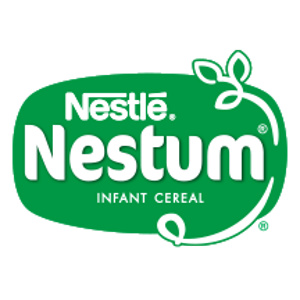
Breast Pumps: The Perfect Ally for Modern Moms
Breast pumps have become a vital tool for new moms to breastfeed while having tight schedules. Read more about them by clicking here.
Breast pumps play a pivotal role in providing flexibility and convenience for nursing mothers. It is a tool designed to extract and store breast milk; these devices offer a lifeline for moms who may not always be near their infants.
Whether you're a working mom returning to the office or seeking to share feeding responsibilities with a partner, a breast pump becomes an essential companion on the path of parenthood.
Beyond convenience, they contribute significantly to a baby's health and well-being. They enable mothers to maintain a steady milk supply and facilitate breastfeeding even when faced with challenges such as latching issues or busy schedules.
In Baby & Me, we will explore the different types of breast pumps, and their benefits. Join us as we navigate the exciting and sometimes challenging terrain of breastfeeding, empowering you with knowledge and support every step of the way.
Benefits of breast pumps
Breast pumps stand as versatile allies in a mother's breastfeeding journey, offering an array of benefits that extend beyond mere convenience. One of the primary advantages lies in their ability to foster flexibility.
Mothers often find themselves juggling various responsibilities, and breast pumps empower them to extract and store milk for later use, ensuring their infants receive the nourishment they need even when separated.
Moreover, these devices play a pivotal role in maintaining a consistent milk supply. Regular extraction with a breast pump can stimulate milk production, addressing concerns about low milk volume. This aspect becomes especially crucial for mothers returning to work or navigating situations where direct breastfeeding may not be immediately feasible.
Breast pumps also open avenues for shared caregiving, allowing partners, family members, or caregivers to actively participate in the feeding process. This shared responsibility not only promotes bonding between the baby and others but also provides the mother with valuable breaks, fostering her physical and mental well-being.
In cases where infants face challenges latching onto the breast, breast pumps offer a practical solution. Mothers can extract milk and provide it to their babies through alternative feeding methods, ensuring the child receives the essential nutrients crucial for their growth and development.
As we explore the world of breastfeeding and maternity, the role of breast pumps emerges as a dynamic and indispensable component, providing mothers with the tools they need to navigate the beautiful yet demanding landscape of motherhood.

Types of breast pumps
Breast pumps come in various types, each catering to the diverse needs of mothers seeking flexibility and comfort in their breastfeeding journey. Understanding the distinctions between these types can empower mothers to make informed choices that align with their lifestyles and preferences.
Manual breast pumps
Manual breast pumps operate without the need for electricity, relying on the manual effort of the user. These pumps are compact, lightweight, and highly portable, making them an excellent choice for on-the-go mothers.
Offering discreetness and simplicity, manual breast pumps are easy to use and clean, providing an ideal solution for occasional extraction or when electricity is not readily available.
Electric breast pumps
In contrast, electric breast pumps leverage electricity to automate the extraction process. These pumps are known for their efficiency and speed, making them a preferred choice for mothers with busy schedules or those who need to express milk regularly.
Electric pumps often come with adjustable suction levels and pumping patterns, allowing mothers to customize the experience based on their comfort and milk flow.
Exploring the nuances of manual and electric breast pumps enables mothers to select the option that seamlessly integrates into their daily routines, ensuring a personalized and efficient breastfeeding experience.
How to clean the breast pump?
Maintaining a clean and sanitized breast pump is crucial to ensure the safety and well-being of both the mother and the baby. Proper cleaning not only prevents contamination but also helps in preserving the longevity of the pump. Follow these steps to keep your breast pump in optimal condition:
- Wash Your Hands: Before handling any breast pump parts, ensure that your hands are thoroughly washed with soap and water. This initial step minimizes the risk of transferring bacteria to the pump components.
- Disassemble pump parts: Take apart all the removable parts of the breast pump, including valves, membranes, breast shields, and bottles. Pay attention to the manufacturer's instructions for disassembly to avoid damaging any components.
- Rinse with cold water: Rinse each part under cold running water to remove any remaining milk residue. Cold water helps prevent the proteins in milk from adhering to the pump parts.
- Clean with warm, soapy water: Use a mild dish soap and warm water to clean all the disassembled parts. Use a designated brush or sponge that is used exclusively for the pump components to avoid cross-contamination. Pay special attention to any nooks and crannies where milk may accumulate.
- Rinse thoroughly: After washing, rinse all parts thoroughly with hot water to remove any soap residue. Ensure that no soap remains on the pump parts, as ingesting soap can be harmful to the baby.
- Air-dry completely: Allow all the components to air-dry on a clean, dry cloth or paper towel. Avoid using a towel that could potentially introduce lint or bacteria.
- Sterilize if necessary: Depending on the manufacturer's guidelines, consider sterilizing the pump parts periodically. This can be done using steam sterilizers, boiling water, or other methods recommended by the manufacturer.
- Store in a clean, dry place: Once the breast pump parts are completely dry, store them in a clean and dry space. Avoid enclosed areas where moisture can accumulate.
Remember to consult your breast pump's user manual for specific cleaning instructions and recommendations. By following these cleaning steps diligently, you ensure a safe and hygienic breastfeeding experience for both you and your little one.

In motherhood, the breast pump emerges as a steadfast companion, offering unparalleled support and flexibility. From the manual pumps that echo simplicity to the electric ones providing efficiency, each type caters to the unique needs of mothers navigating the beautiful yet demanding landscape of breastfeeding.
As we embrace the myriad benefits and learn the art of proper maintenance, we celebrate the resilience and adaptability that breast pumps bring to this shared journey of breastfeeding

Gain a better understanding of your child's development with the help of our stages


































